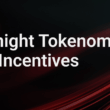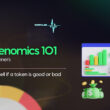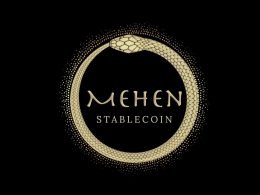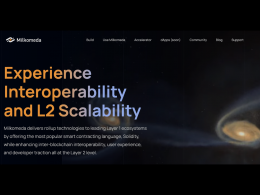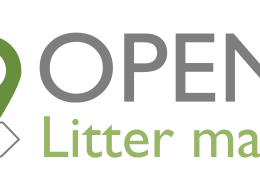Ever since the inception of digital-trading assets, most crypto transactions go through trust-based centralized exchanges. However, over the past few years, we have seen some interesting innovations in terms of trading technologies within the blockchain space. One such innovation is the concept of decentralized exchanges (DEXes), which allow traders to find their peers and transact directly on-chain. Through DEXes, counterparties eliminate their dependency on centralized trading exchanges and the associated custody risks such as theft or hacks.
The number of decentralized exchanges has increased over the past years. For instance, in the Ethereum family, there is Uniswap, Airswap Protocol, Etherex, IDEX, and more. When it comes to the Cardano ecosystem, there is no decentralized exchange yet. Tokens built on Cardano don’t have a native exchange to list. To fix this, a team of developers has put forward a Fund 4 proposal on Project Catalyst. They are seeking $50,000 worth of funding to develop Cardax, which will serve as the first DEX in the Cardano ecosystem.

The Team
Behind the Cardax project proposal is Ryan Morrison, who leads the team at Quant Digital – a company that develops on Cardano. Ryan, who is a highly experienced marketing professional, stakepool operator, and entrepreneur, believes his team is well-equipped with the technical and marketing knowledge to make the project a success. The team comprises developers and crypto enthusiasts with a deep understanding of native assets, smart contracts on Cardano, and the overall blockchain ecosystem. Some similar projects the team has worked on include Celsius, Open Ocean, and Bitcoin EU.
A Closer Look at the Cardax Project Roadmap
Cardax is a decentralized exchange that will be powered by the Extended Automated Market Maker (EAMM) protocol. It aims to provide liquidity to projects that issue native tokens on Cardano. Following the activation of the Mary hard fork on Cardano’s main net, which brought native tokens and multi-asset support to Cardano, there is an increased need to develop a native exchange. Additionally, with the upcoming rollout of the Goguen era, smart contracts will enable the development of decentralized applications on Cardano.
These are huge leaps forward that will open up exciting use cases of Cardano at the enterprise level. Having a native Cardano exchange will address some trading challenges and gaps within the ecosystem. Some features and capabilities that Cardax will bring to the Cardano network include:
- Support for any Cardano native token
- Ability to join liquidity pools to collect fees on ADA- Cardano native tokens pairs
- Liquidity-sensitive automated pricing using EAMM protocol
- Ability to trade ADA for any Cardano Native Token
- Ability to trade between Cardano Native Tokens through a single transaction
- Ability to trade and transfer to a different address in a single transaction
- Easy purchase of ADA or any Cardano Native Token from Yoroi wallet
As per the proposal, Ryan and his team are looking to implement this project in several major phases. Each phase of the project has clearly outlined milestones as shown below.
The requested budget in Fund 4 ($50,000) will cover the implementation costs of Phase 1 of the project. As outlined above, this phase will focus on the system architecture and UI/UX of Cardax.
How Cardax Compares to Other DEXes
Decentralized Exchanges (DEX) usually rely on either an order book or Automated Market Maker (AMM) to provide market prices. The order book model works best when the exchange offers trading pairs with high liquidity such as BTC/ETH. Most centralized exchanges such as Binance and Coinbase use order books. Some decentralized exchanges like IDEX also use the order book model. However, in markets with low liquidity, order books don’t work that well. Users can make orders but finding a match for it will not be as easy, so they might end up waiting for a long time. As such, they will not escape the volatility and large spreads occurring in these situations.
On the other hand, an Automated Market Maker model, like that used on Uniswap, suits exchanges that offer pairs with low liquidity. The proposing team has been researching how they can leverage the two models to provide the best trading experience on tokens that will be served on Cardax. By combining the best of the two worlds, they are looking to develop a system that:
- Allows users to become market makers by either starting a liquidity pool or participating in an existing pool.
- Minimizes slippage
- Minimizes the risk of impermanent loss
- Provides more price transparency
- Allows token issuers to create a new pair without having huge capital as collateral.
The Future of Digital Asset Exchange
While centralized exchanges provide unique benefits, for now, switching to decentralized crypto exchanges is necessary for users to exploit the full potential of blockchain. This also aligns with the principles of decentralization and self-sovereignty, which are the key ethos of blockchain technology.
With the increasing adoption of Cardano and ongoing initiatives to support DeFi, a Cardano-based DEX will serve as an essential and powerful trading venue in the ecosystem. Cardax is set to provide a trustless way of connecting stakeholders while promoting equitable governance and involvement in the Cardano community. However, as with other decentralized platforms, DEXes are still in their early years and will need further development of infrastructure, refinement of user experience, and improved scaling mechanisms to ensure future adoption.
For more information about the Cardax project, check out the project proposal as submitted to Project Catalyst using the link below.
https://cardano.ideascale.com/a/dtd/Cardax-DEX-on-Cardano/342252-48088



